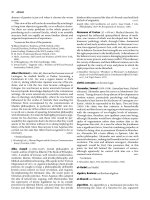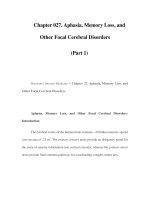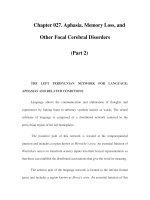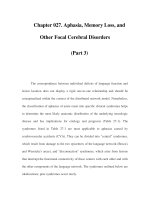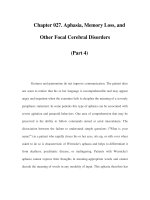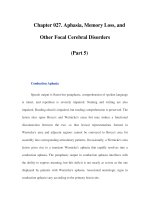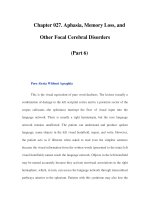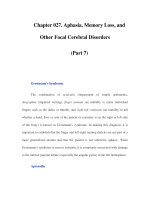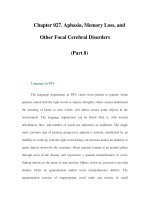Chapter 057. Photosensitivity and Other Reactions to Light (Part 5) pps
Bạn đang xem bản rút gọn của tài liệu. Xem và tải ngay bản đầy đủ của tài liệu tại đây (14.36 KB, 5 trang )
Chapter 057. Photosensitivity and
Other Reactions to Light
(Part 5)
Polymorphous Light Eruption
After sunburn, the most common type of photosensitivity disease is
polymorphous light eruption (PLE), the mechanism of which is unknown. Many
affected individuals never seek medical attention because the condition is often
transient, becoming manifest each spring with initial sun exposure but then
subsiding spontaneously with continuing exposure, a phenomenon known as
"hardening." The major manifestations of PLE include pruritic (often intensely so)
erythematous papules that may coalesce into plaques in a patchy distribution on
exposed areas of the trunk and forearms. The face is usually less seriously
involved.
The diagnosis can be confirmed by skin biopsy and by performing
phototest procedures in which skin is exposed to multiple erythema doses of UV-
A and UV-B. The action spectrum for PLE is usually within these portions of the
solar spectrum.
Treatment of this PLE includes the use of sunscreens and the induction of
hardening by the cautious administration of artificial UV-B (broad-band or
narrow-band) and/or UV-A radiation for 2–3 weeks prior to initial sun exposure.
Phototoxicity and Photoallergy
These photosensitivity disorders are related to the topical or systemic
administration of drugs and other chemicals. Both reactions require the absorption
of energy by a drug or chemical resulting in the production of an excited-state
photosensitizer that can transfer its absorbed energy to a bystander molecule or to
molecular oxygen, thereby generating tissue-destructive chemical species,
including ROS.
Phototoxicity is a nonimmunologic reaction caused by drugs and chemicals,
a few of which are listed in Table 57-3. The usual clinical manifestations include
erythema resembling a sunburn reaction that quickly desquamates, or "peels,"
within several days. In addition, edema, vesicles, and bullae may occur.
Table 57-3 Phototoxic Drugs
Topical
Systemic
Amiodarone +
Dacarbazine +
Fluoroquinolones
+
5-Fluorouracil + +
Furosemide +
Nalidixic acid +
Phenothiazines +
Psoralens + +
Retinoids +/– +
Sulfonamides +
Sulfonylureas +
Tetracyclines +
Thiazides +
Vinblastine +
Photoallergy is much less common and is distinct in that this is an
immunopathologic process. The excited-state photosensitizer may create highly
unstable haptenic free radicals that bind covalently to macromolecules to form a
functional antigen capable of evoking a delayed hypersensitivity response. Some
of the drugs and chemicals that produce photoallergy are listed in Table 57-4. The
clinical manifestations typically differ from those of phototoxicity in that an
intensely pruritic eczematous dermatitis tends to predominate and evolves into
lichenified, thickened, "leathery" changes in sun-exposed areas. A small subset
(perhaps 5–10%) of patients with photoallergy may develop a persistent exquisite
hypersensitivity to light even when the offending drug or chemical is identified
and eliminated, a condition known as persistent light reaction.

